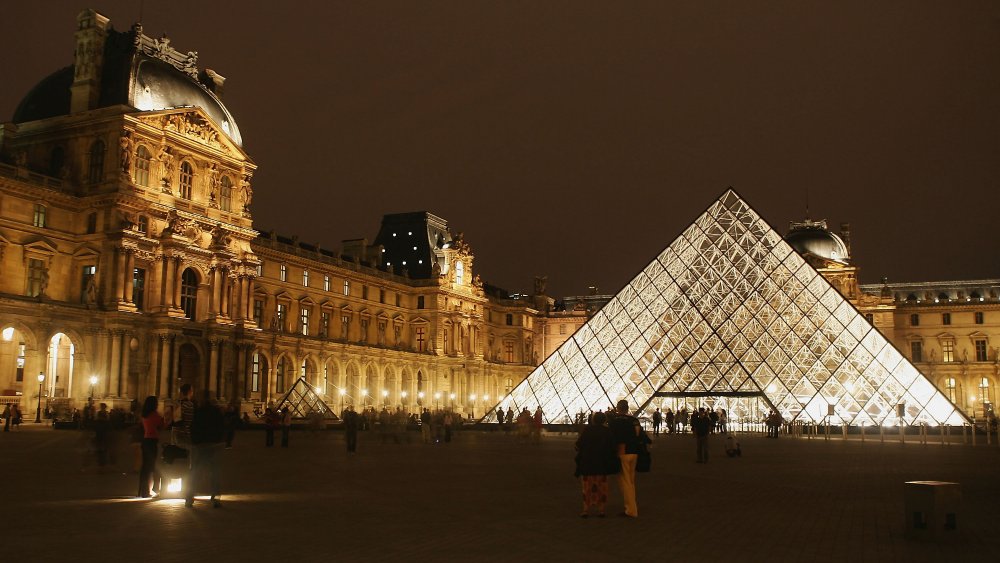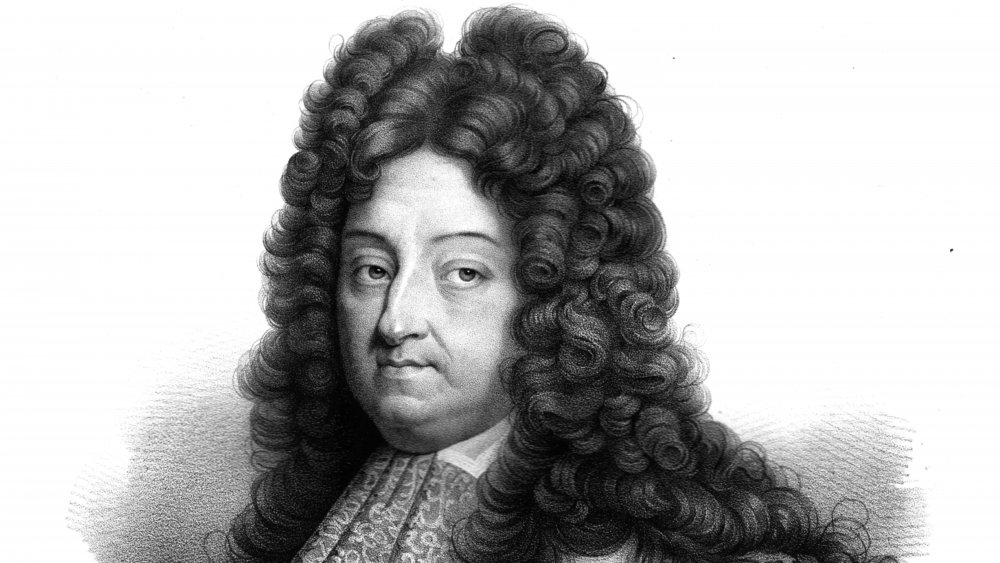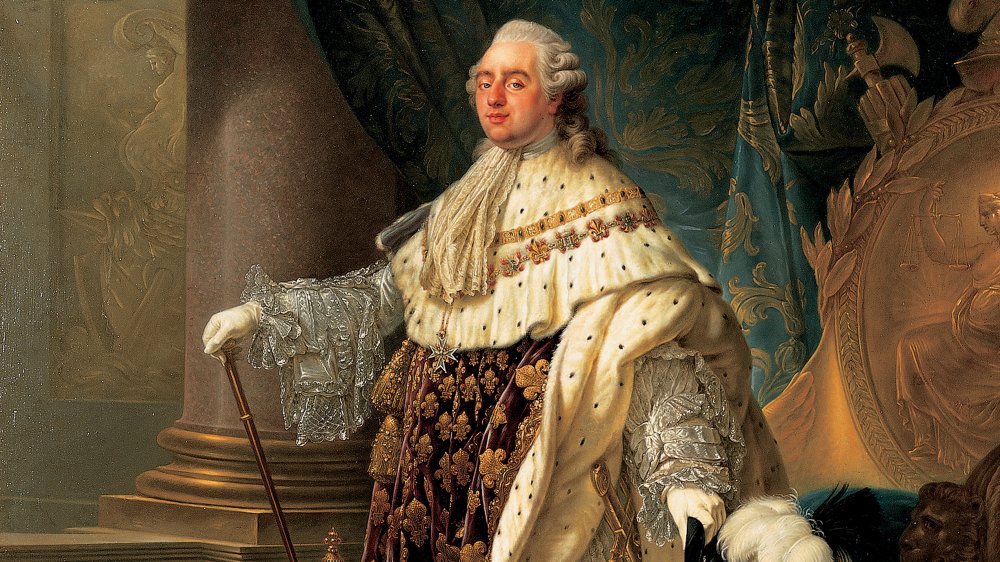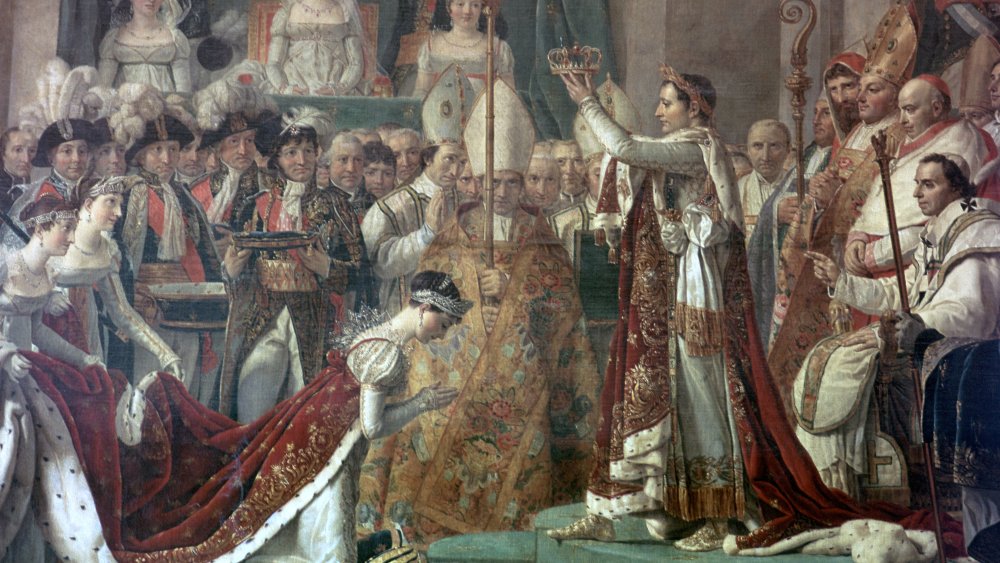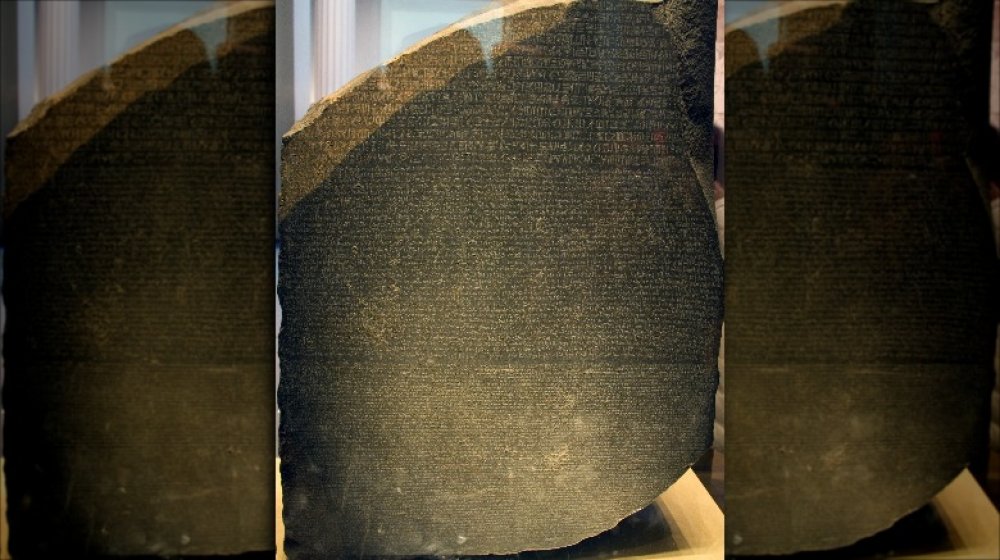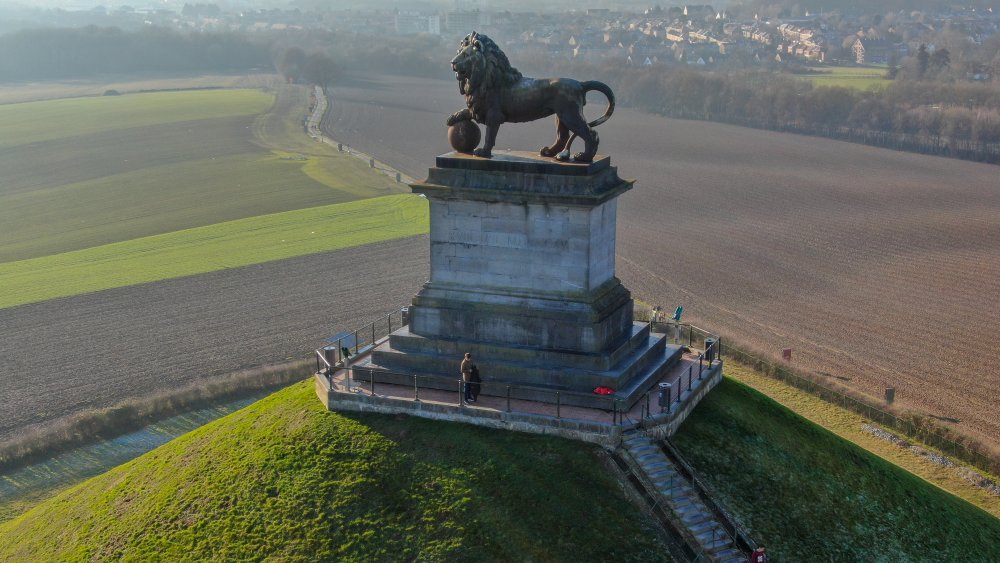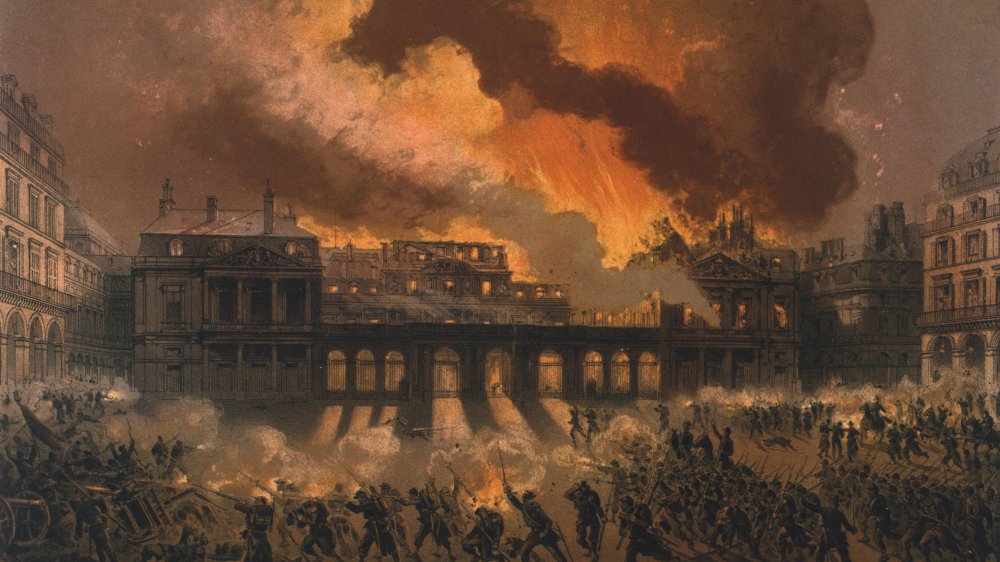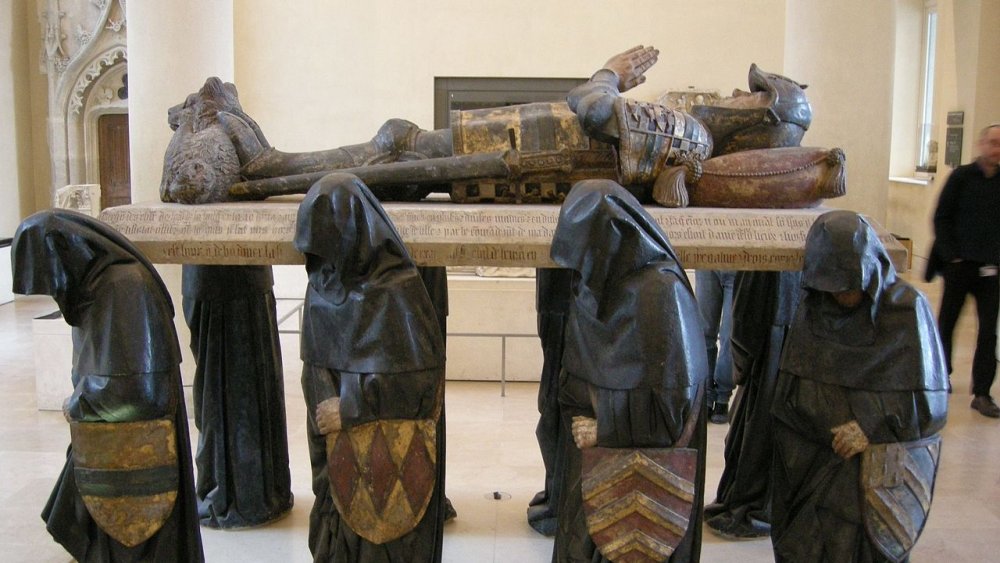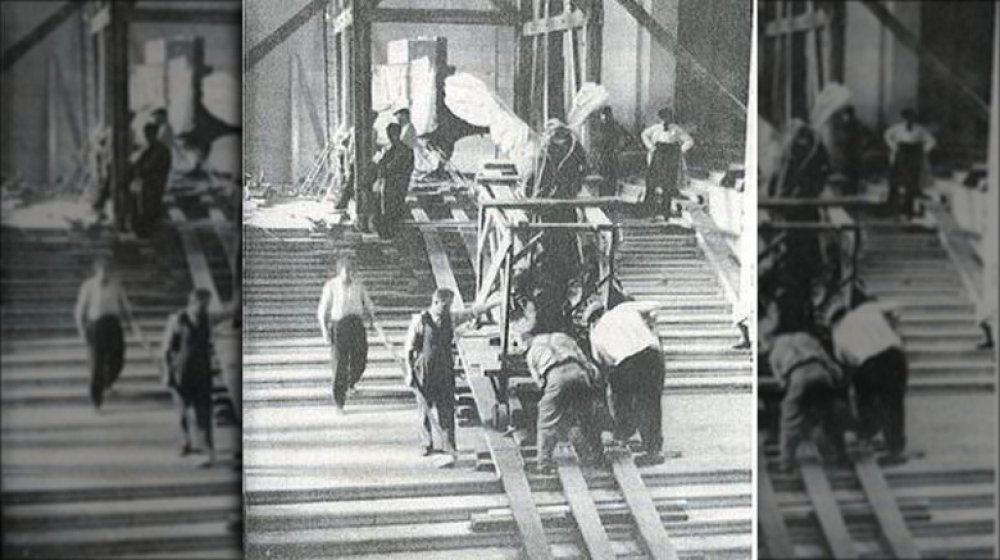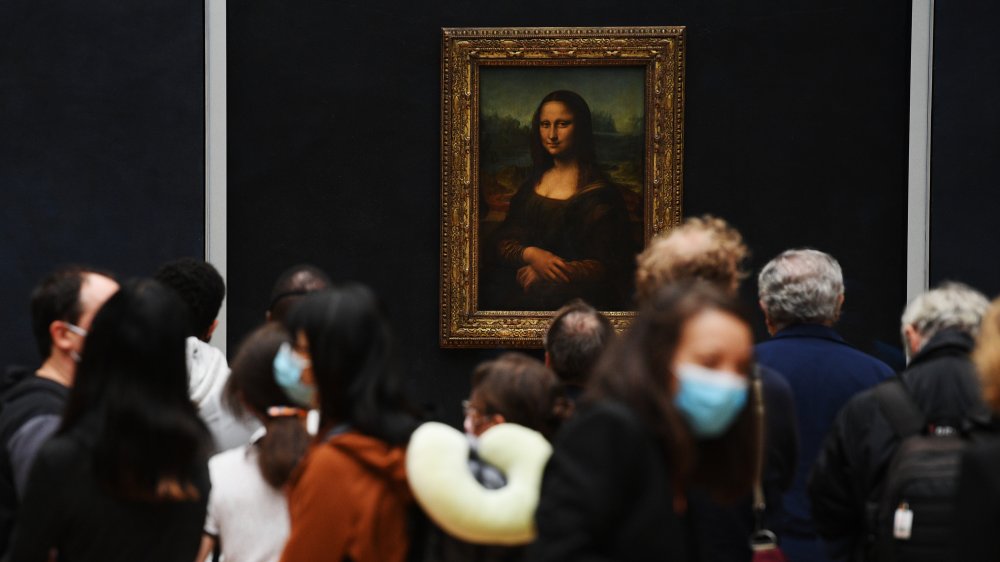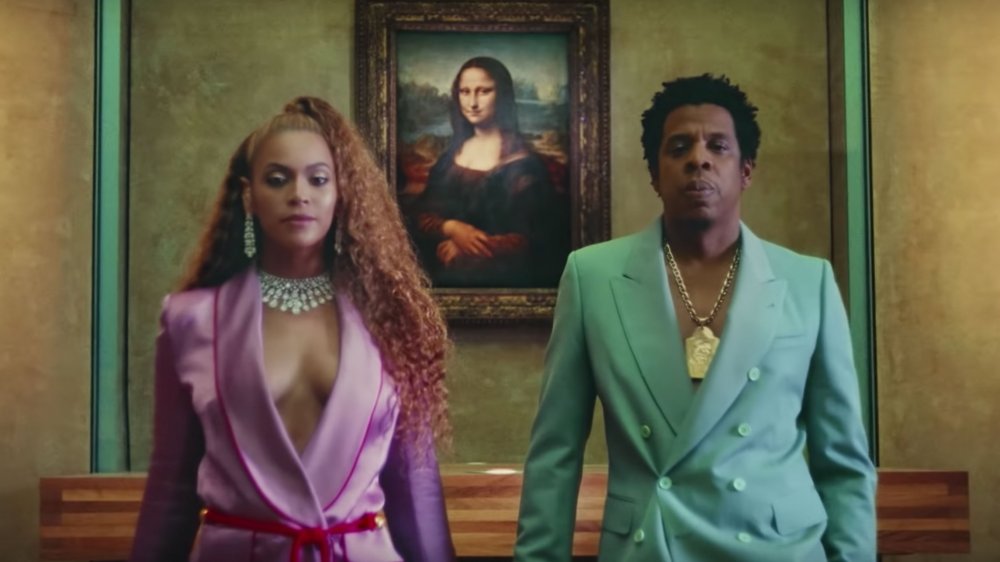The Crazy History Of The Louvre
The Louvre in Paris is the world's most-visited art museum, which makes sense because it's located in Paris, and everyone wants to go to Paris. Also, it's huge and crammed full of some of the most remarkable pieces of art humanity has ever produced, including Da Vinci's Mona Lisa, the Venus de Milo, and Michelangelo's Dying Slave. The museum is so vast that it's said that even if you spent all day, every day, admiring each exhibit for just 30 seconds, it would take you a little over three months to see it all.
Originally a 12th-century fortress built by the first king of France, Philippe Augustus, the modern-day structure originated in the 16th century when King Francis I, reeling from military losses, decided he needed to be closer to the city to better control it. He tore down most of that original fort and built a palace for himself in 1546. Since then, the Louvre has been a residence (and jail) for kings, an abandoned, rotting property occupied by squatters, a warehouse for stolen goods, and, of course, a museum.
Any building that stands for more than four centuries is going to have some stories to tell, and the crazy history of the Louvre is no exception. Here are some of the craziest things to happen at the legendary museum.
The Louvre was an artists' retreat
After being originally conceived as a fortress, the structure on the bank of the Seine River in Paris was torn down and rebuilt into a lavish palace by King Francis I in 1546. When his distant descendant Henry IV ascended the throne in 1589, Paris was in a bad way. After decades of religious war, the city had lost a bit of its luster. Henry, a practical man, converted to Catholicism in order to claim the throne and end the conflicts and was determined to bring Paris back to its old glory.
As Art & Object reports, one of Henry's gambits was to attract artists to Paris by offering them free lodging in the Louvre beginning in 1608. Artists in the 17th century had the same problem artists have today — art doesn't pay very well — so having free lodging in exchange for beautifying Paris was a pretty good deal.
This worked out so well that Henry's grandson Louis XIV, popularly known as the Sun King, continued the practice. In 1682, Louis moved the court to the new palace at Versailles, and as Live Science notes, he invited various artist academies to move into the Louvre in his absence. This was great for the artists but not so great for the palace itself, because the artists in residence acted like fraternity brothers and failed to take good care of the property.
The Louvre was abandoned for a century
The Louvre was the home of French Kings for more than a century, but in the late 1600s, King Louis XIV began spending more of his time at Versailles. He expanded that humble chateau into the spectacular Palace of Versailles we know today and, as History.com notes, completely moved the French government and his court there by 1682. This was a power move: Louis knew the court would have to follow him in order to maintain its influence, and thus, they'd be cut off from Paris and totally reliant on him.
Amazingly, that means the Louvre was abandoned and left empty — in fact, several of the additions Louis XIV had begun were left without roofs when he ordered the work to cease. As Condé Nast Traveler reports, the Louvre was left to the mercy of the elements and the depredations of vandals. The palace fell into spectacular disrepair. It wasn't long before people began moving into what would best be described as "the ruins," living in what had to be pretty terrible squalor as the palace fell apart around them.
Amazingly, the Louvre remained abandoned and crumbling for more than a century as French kings continued to live and hold court at Versailles until the French Revolution.
The Louvre was briefly a royal jail
After Louis XIV moved his court to Versailles and left the Louvre to rot, no king made his home there for more than 100 years. When Louis XVI moved back to the Louvre in 1791, it wasn't a joyous reunion. King Louis was under arrest.
What had happened, of course, was the French Revolution. After years of financial mismanagement and disconnection from the people, the king and his wife Marie Antoinette found themselves losing their grip on power. As History.com notes, in 1789, a mob arrived at Versailles and forced the king and his family to travel back to Paris, where they were moved into the dilapidated Tuilleries Palace and kept there more or less under house arrest.
They made an attempt to escape, but, as the BBC reports, they were apprehended, officially arrested by the revolutionary government, and returned to the Louvre. They were kept under lock and key in Tuilleries Palace (at the time part of the Louvre complex) for more than a year. The revolutionary government initially hesitated to treat a king roughly, but when it became clear that Louis had attempted to get assistance from Austria to regain his power, he was tried for treason, found guilty, and beheaded in January 1793.
Napoleon renamed the Louvre after himself
Napoleon Bonaparte is remembered for many things, but humility is not one of them. The man who proclaimed himself emperor after his Grande Armée conquered much of Europe made sure the world's most famous museum was named after himself. He appointed Dominique Vivant Denon as director of the Louvre, and Denon showed his gratitude by immediately renaming it the Musée Napoleon.
Napoleon was very conscious of history and worked hard to link himself with the past in order to legitimize what was essentially a military dictatorship. He initially had himself declared first consul to link himself to the old Roman Republic. Later, when he became emperor, he forced the pope to travel to Paris to conduct the coronation because the pope had enthroned the Holy Roman emperor Charlemagne in 800. Unsurprisingly, he chose to live in the ancient home of French monarchs, the Louvre.
Napoleon certainly made himself at home. As History.com reports, he took the Mona Lisa from its usual spot and hung it in his private bedroom, where it remained until Napoleon's downfall in 1814. In a sense, Napoleon still lives there: The immense painting he commissioned to record his coronation as emperor (because of course he did) still hangs in the museum today.
The Rosetta Stone almost ended up in the Louvre
The Louvre exhibits some of the most famous pieces of art ever created. And much of that art was the result of looting by French armies throughout history, most notably during Napoleon's reign. As History.com notes, Napoleon's Grande Armée added thousands of priceless pieces of art to the museum's exhibits — about 5,000 of which were ultimately returned when Napoleon fell from power.
One incredibly important piece of history was almost part of the Louvre's legacy: the Rosetta Stone. As the Linda Hall Library explains, the Stone was discovered in Egypt by Napoleon's forces in 1799. At the time, the written language of ancient Egyptian hieroglyphs was a mystery, and the Stone's repetition of a priestly decree in three languages was the breakthrough that allowed us to understand hieroglyphics.
When the French were defeated by the British in 1801, the treaty specified that all the loot the French army had acquired in Egypt should be turned over to the British — and that would include the already famous Rosetta Stone. The French tried to cheat: They moved the Stone from Cairo to Alexandria and tried to delay while they came up with various arguments. The British were firm, however, and the Stone was handed over and brought to London — where it remains on display at the British Museum.
The Louvre's staff tried to hide their ill-gotten gains
Like most major museums of the time (and to a great extent in the modern day), many of the exhibits in the Louvre were basically stolen. Nations can dress it up with other words if they want, but when an army marches in, loads up trucks of art and sculpture, and leaves without paying for it or negotiating for it, that's just looting.
Few armies were as good at looting as Napoleon's Grande Armée, which added thousands of pieces to the Louvre's collection during his 16-year rule over the French. Napoleon made it a priority to fill the Louvre — and by extension, Paris — with incredible art that doubled as symbols of his power and military success.
When Napoleon was finally defeated at the Battle of Waterloo, the countries that had been looted demanded the return of their art. The Louvre's administrators were horrified and tried to hide as many of the exhibits as they could. As historian Edward Porter Alexander writes, the Louvre's director, Dominique Vivant Denon, simply claimed that he couldn't remember where many of the exhibits had been stored — a gambit that worked surprisingly well. Others tried to hide pieces in their private collections. In the end, however, the Louvre was forced to return thousands of pieces to their home nations.
Another revolution burned part of the Louvre to the ground
The Louvre has played a key role in almost all of French history. When the French once again decided they'd had enough of kings in the 1870s, the Louvre once again played an important role.
According to Abandoned Spaces, on May 23, 1871, a group of 12 men marched on Tuileries Palace, which was part of the Louvre complex of buildings, and set it on fire using tar and oil. The fire burned for two days straight and turned the beautiful palace into a burned-out wreck.
The charred husk of the building was left rotting for 11 years, almost as a reminder of the monarchy the French had finally driven out, before the decision was made to demolish the ruins in 1882. By September 1883, the remnants of the building were finally gone, and all that remains today are its gardens and a few pieces salvaged from the flames — housed, naturally, in the Louvre.
An entire tomb was moved into the Louvre
If you have the opportunity to visit the Louvre, be prepared to encounter some creepy and downright macabre stuff — like, for example, several entire tombs. Yes, tombs.
In 1899, for example, the incredibly creepy tomb of Philippe Pot was installed in the museum. Pot was a big shot in Burgundy in the 15th century, and his tomb is ... something. As described by Joy of Museums, it includes a full-size effigy of Pot lying on a stone slab, wearing his best knight's armor. The slab is being carried by eight life-sized mourners dressed in seriously creepy black robes. Did we mention that everything is life-sized? This was, apparently, quite the rage in 15th-century Burgundy: Pot's is the last known example of this kind of tomb, but it was pretty common for a while. Depending on who you ask, the tomb was either outright stolen during the French Revolution, or the new revolutionary government seized it as state property and sold it. It was eventually donated to the Louvre.
It's not the only tomb in the museum, either. There's the Chapel of the tomb of Akhethotep and fragments from the tomb of Philippe Chabot, count of Brion, among others. And if you're just looking for creepiness, you can check out the statue from the tomb of Jeanne de Bourbon-Vendome, who is depicted with bugs and worms eating their way out of her body (yuck).
The Nazis used the Louvre as a stolen goods warehouse
The French didn't exactly have a successful World War II experience. They were conquered by Germany almost overnight and spent the war under occupation, with an embarrassing puppet government set up to create the illusion of sovereignty.
But as The Guardian reports, the French did one thing right: When a German invasion became obviously imminent, they cleared out the Louvre and hid its priceless art collection. On August 25, 1939, the Louvre was closed for three days for repairs — but no repairs were performed. Instead, hundreds of dedicated staff and volunteers worked around the clock to pack up just about every important piece of art and sculpture in the museum and place them in a fleet of more than 200 vehicles which took them to remote castles around the country for hiding.
It worked. When the Nazis waltzed into the Louvre, all that remained were some minor works. The Nazis ordered the museum opened anyway, for appearances. According to History.com, they then used a large portion of the empty museum to temporarily store art stolen from wealthy French families — primarily Jewish families. For several years, the Louvre was essentially a warehouse for stolen goods — most of which made their way to elite Nazi homes in Germany. Luckily, a spy managed to keep track of what was sent where, and many of the works of art were eventually returned to their rightful owners.
The most lo-fi art heist in history happened at the Louvre
When you hear the words "art heist," you think of Ocean's 11 or The Thomas Crown Affair – complex heists involving technology, months of planning, and tricky puzzles for grizzled investigators to figure out. And then there's the time the Mona Lisa – yes, that Mona Lisa — was stolen from the Louvre.
It happened in 1911 and is probably the most lo-fi art heist in history. As History.com explains, Vincenzo Peruggia, a former employee at the museum, strolled in one day and hid in a closet until early the next morning. Then he put on the uniform of museum staff and emerged. The Mona Lisa, at that time, was just hanging on the wall, so he simply removed it and carried it to a stairwell, where he removed the painting from its glass frame and wrapped it in a sheet. When he tried to exit the stairwell, he had some trouble getting the door open, but a museum worker came by and helped him out, thinking he was a co-worker.
No one noticed that the Mona Lisa was missing for more than a day. And for two years, the frantic investigation produced no clues while Peruggia kept the painting in his apartment, spending his evenings looking at it. He was finally caught when he tried to arrange a sale of the Mona Lisa in 1913. Peruggia was convicted of theft and served just seven months in prison because he was viewed as a hero of sorts in his native Italy.
That time a bunch of angry archaeologists made the Louvre free
The Louvre is an expensive place to keep running: According to The Art Newspaper, its annual budget is €250 million, of which €150 million is generated through ticket sales and other revenue sources. (The rest comes from the government). Tickets to enter the museum cost about €15 (€17 if you "skip the line" and buy them online), which doesn't seem so bad considering all the incredible things on display there.
But for a brief moment in 2015, you could have gotten an even better deal — you could have gotten into the Louvre for free. According to The Local, that's when a group of about 100 angry archaeologists (which is not a phrase you see very often) stormed the museum and blocked the ticket booths. In what is probably the nicest and most wholesome protest ever, they cheerfully informed everyone entering the museum that entry was free that day.
This was all done to protest the increasing use of private for-profit companies in the field of archaeology, specifically projects designed to preserve ancient artifacts discovered at construction sites. The scientists worried that corporate interests would corrupt the field and sought to bring attention to the issue with their stunt. According to Hyperallergic, the museum initially tried closing the entrances but then shrugged and just let everyone come in for free until the protest ended about five hours later.
Beyonce and Jay-Z flexed hard at the Louvre in 2018
For most of us, if you want to go see the Mona Lisa at the Louvre, you have to work for it. Aside from traveling to Paris and buying a ticket, you also have to fight the huge crowds. And when you finally get to the room where the painting is on display, you're going to have to push through a sea of bodies to peer at the surprisingly small artwork from a distance, through the bulletproof glass that protects it.
Of course, if you're Shawn Carter — you might know him better as Jay-Z — and Beyoncé Knowles, things are a little different. As The Washington Post reports, in 2018, the power couple made a few phone calls and had the Louvre cleared out so they could shoot a music video there. The video is, of course, absolutely gorgeous.
But what's truly remarkable about it is one of the early scenes, where Jay-Z and Beyoncé are shown standing in front of the Mona Lisa. Most people, if they're lucky enough to get that close — in an exclusive showing, without having to fight crowds — would be awestruck. They'd take every advantage of the moment. The Carters literally stand with their backs to the painting. They don't even look at the Mona Lisa. That is what pop culture scientists call "a flex."
